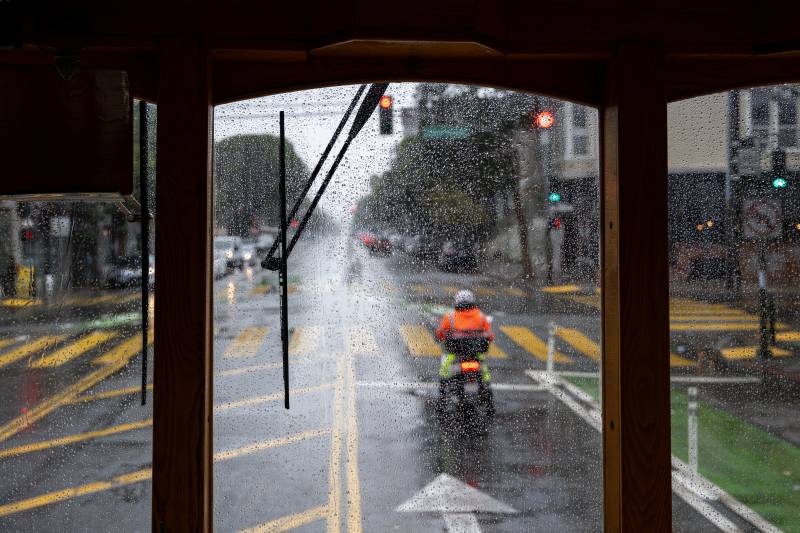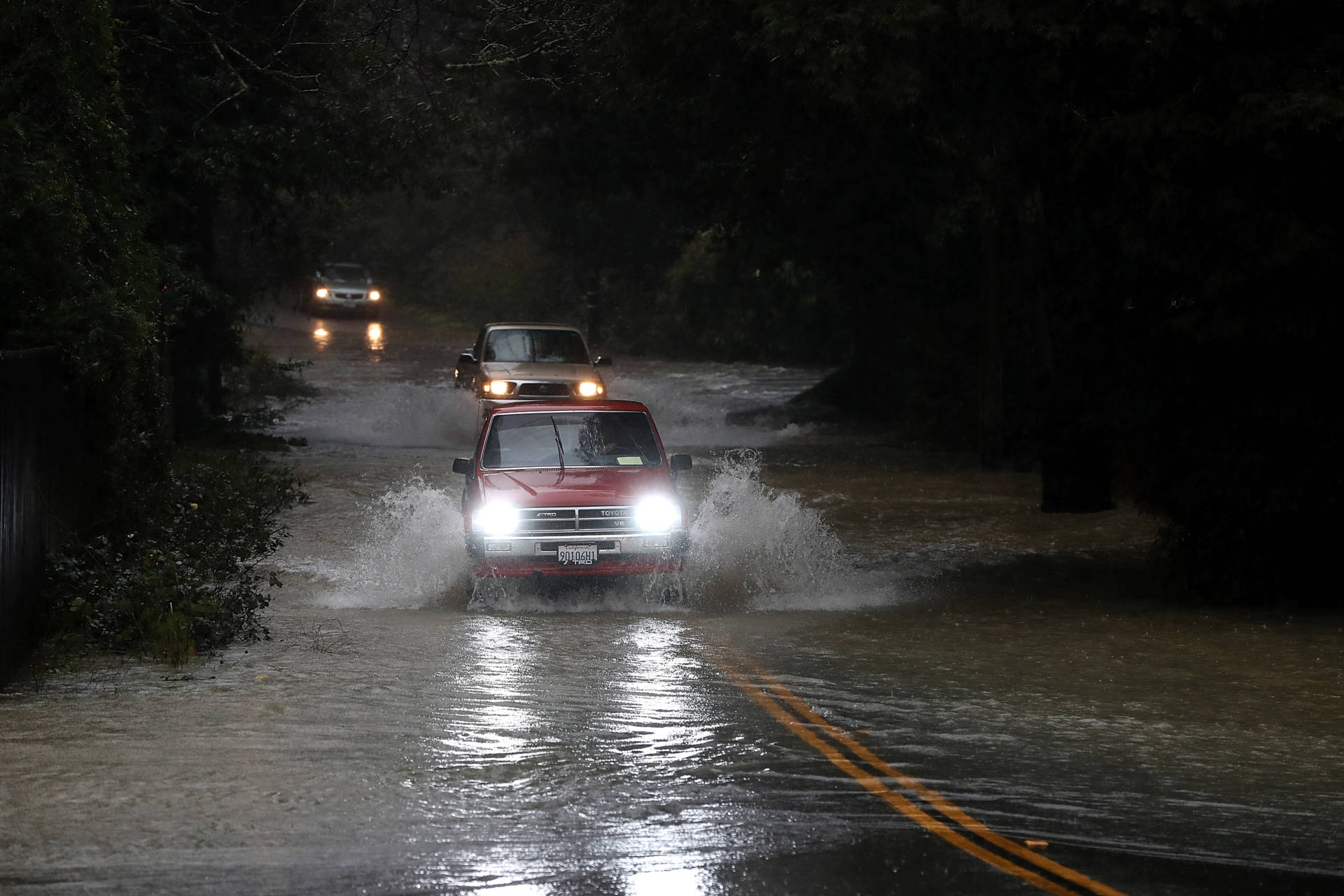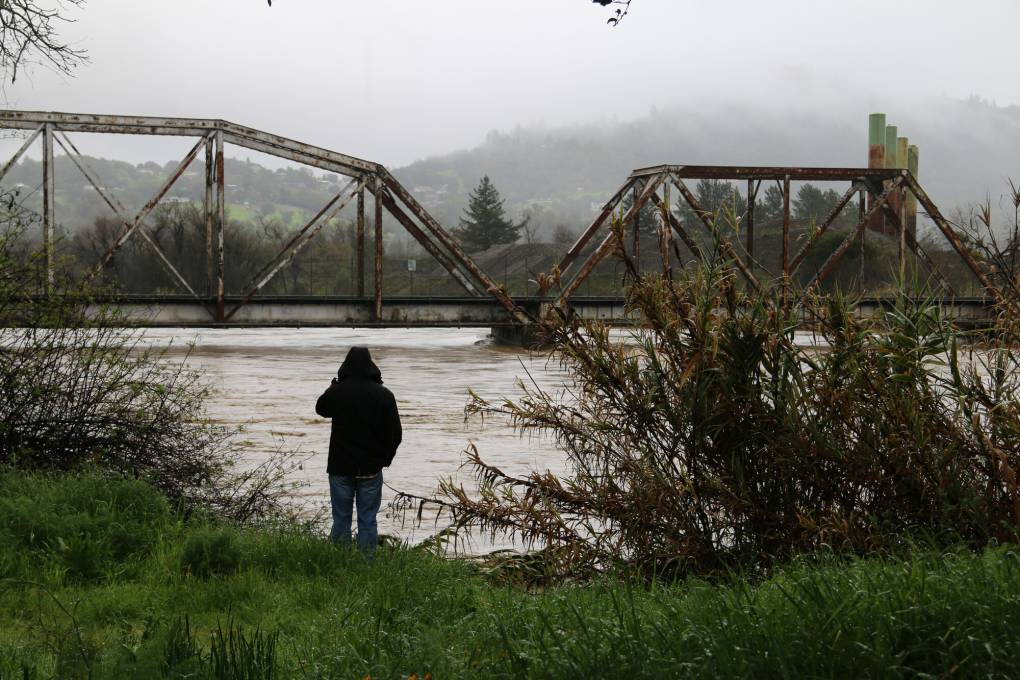“This is the only road out from all of the homes out here,” Osborne told KQED. He said that there isn’t much he thinks can be done to alleviate the issue, since it would require a lot of real estate and expensive renovation to lift the low-lying part of the road enough to avoid flood risk.
“Even when Guerneville itself isn’t impacted, this road will close because [it’s] at such a low point,” he said.
Osborne expects the flooding to go down enough to cross the road by Wednesday night, but if there are any showers in the afternoon, it could mean at least another day of being flooded in.
Creeks throughout central Sonoma County also reached moderate flood levels early Wednesday. Green Valley Creek at Martinelli Road and Colgan Creek near Sebastopol are both expected to follow a similar receding trend as the Russian River, but the risk remains high at Mark West Creek near Mirabel Heights, which is projected to crest above major flood levels. It had reached 65 feet as of 7:45 a.m., according to NWS observations.
In Napa, flood risk downtown at the Napa River was downgraded Wednesday morning after an earlier forecast projected major flooding risk. It hovered around 23.5 feet.
The flood gates on McKinstry Street near downtown’s Oxbow Market were closed by the Napa County Flood District and the city on Tuesday.
County spokesperson Linda Weinreich said that street teams were assessing mudslides that began overnight near Moore Creek Park in St. Helena and on Redwood Road near Oak Knoll and were trying to clear downed trees while there’s a break in the rain.
Since the forecast “shows that the rains are returning tomorrow — things, of course, could change — but it’s a good time to get sandbags,” she said. “And we want people also to sign up for emergency notifications.”
The return of rain on Thursday could bring downtown 1.5 inches more rainfall to Sonoma and Napa counties, according to Oudit. Gusty winds could knock down more trees and power lines, and more showers could exacerbate current road flooding and ponding near buildings.
“The challenge is that there’s not enough time to actually do anything,” Hopkins said. “I think that we’re all going to be waiting on pins and needles to see if that damage spreads.”
Resources for Sonoma County evacuees and people who experienced flooding will be available at the West County Services Center, known to locals as the Bank of America building in downtown Guerneville, in the coming days.
After the storm clears later this week, Hopkins said the county will look at how to better prepare for future storms. Her office has been working on safety and evacuation procedures with parks, trying to secure contracts with towing companies ahead of time, and looking for ways to give people longer warning windows.
The Forestville Youth Park, where many evacuees fled Tuesday, quickly reached capacity, so the county also opened its Guerneville park-and-ride for trailers. Hopkins said during greater floods, though, that location would be underwater.
“We also have to be careful if suddenly flood estimates are jumping up by a number of feet, then we run the risk of putting people in a place that could actually flood as well,” she said.
Mudslides, like a large one that damaged roads and carried an unoccupied home into the river in Forestville on Tuesday afternoon, are more challenging to prepare for.
“The reality is that we have a lot of homes that were built along old logging roads on extraordinarily steep slopes right next to the Russian River, which is one of the most powerful, sort of flashiest rivers,” Hopkins said. “When all of that water starts coming down, it can rise very, very quickly and have a tremendous amount of force. There’s not a whole lot that we can do.”
Hopkins said efforts will also shift to assessing damage and beginning eexpensive repairs — like to a road that fell into the Russian River during Tuesday’s mudslide — that need to be done before fire season in the spring.
“Those are critical evacuation routes during fire season and those kinds of projects — that kind of permitting — takes a really long time to actually get through,” she told KQED. “One of our biggest challenges is how can we deal with the flood damage in time to prepare for a wildfire season?”



